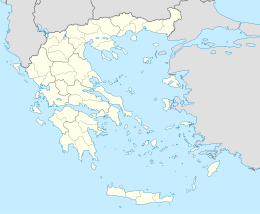Gyali: Difference between revisions
Volcanoguy (talk | contribs) removed Category:Lava domes; added Category:Holocene lava domes using HotCat |
No edit summary Tags: Mobile edit Mobile web edit |
||
| Line 12: | Line 12: | ||
|archipelago = [[Dodecanese]] |
|archipelago = [[Dodecanese]] |
||
|total_islands = |
|total_islands = |
||
|area_km2 = |
|area_km2 = 4.558 |
||
|highest_mount = Volcano |
|highest_mount = Volcano |
||
|elevation_m = 180 |
|elevation_m = 180 |
||
Revision as of 09:58, 4 November 2022
Native name: Γυαλί | |
|---|---|
 Pumice mining on Gyali | |
| Geography | |
| Coordinates | 36°39′43″N 27°06′54″E / 36.662°N 27.115°E |
| Archipelago | Dodecanese |
| Area | 4.558 km2 (1.760 sq mi) |
| Highest elevation | 180 m (590 ft) |
| Highest point | Volcano |
| Administration | |
Greece | |
| Region | South Aegean |
| Regional unit | Kos |
| Capital city | Chora |
| Demographics | |
| Population | 10 (2001) |
| Additional information | |
| Postal code | 853 03 |
| Area code(s) | 22420 |
| Vehicle registration | ΚΧ, ΡΟ, ΡΚ |
Gyali (Greek: Γυαλί "glass", also spelled Giali or Yali, pronounced [ʝaˈli]) is a volcanic Greek island in the Dodecanese, located halfway between the south coast of Kos (Kardamaina) and Nisyros. It consists of rhyolitic obsidian lava domes and pumice deposits (which are mined in huge quantities).[1] The island has two distinct segments, with the northeastern part almost entirely made of obsidian and the southwestern part of pumice. These are connected by a narrow isthmus and beach made of modern reef sediments. Anciently, the island was known as Istros (Ancient Greek: Ἴστρος).[2]
Geography

The island is 6 km (4 mi) long and between 4 km (2 mi) and 500 m (1,640 ft) across. It has a 180 m (591 ft) cave. Parts of the island undergoing pumice strip mining are barren of vegetation. The 2001 census reported a resident population of 10 people. Administratively, it is part of the municipality of Nisyros. Its also popular for Perli, a thermo powder added in construction.
See also
References
- ^ "Yali". Global Volcanism Program. Smithsonian Institution. Retrieved 2008-01-22.
- ^ Lund University. Digital Atlas of the Roman Empire.
External links
- Official website of Municipality of Nisyros (in English, French, German, Greek, Italian, and Spanish)


